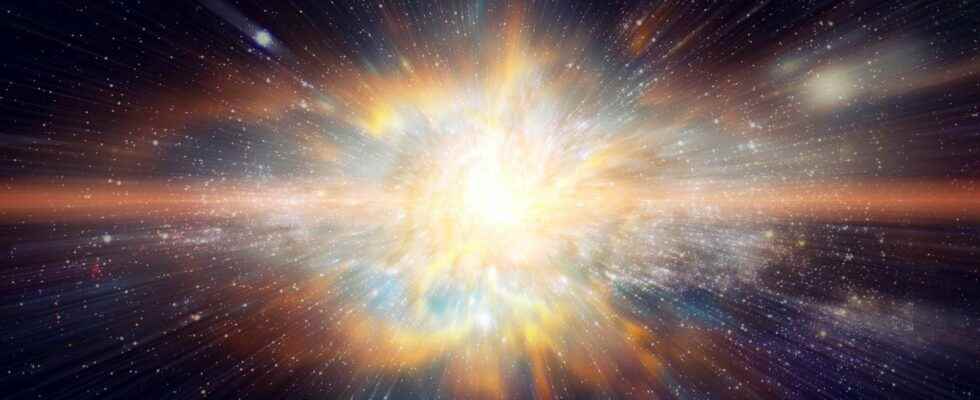When the stars exhaust all their fuel and can no longer ensure the reactions of nuclear fusion that feed their hearts, they reach the end of their life. In the case of massive starsmore than 8 masses solar, they gradually collapse on themselves, until, under effects of pressure still poorly known, all their upper layers are ejected at great speed in interstellar space: this is the phenomenon called supernova. This cataclysmic explosion creates shock waves that will propagate at very high speed, until they tickle clouds gas and dust.
But these star deaths also generate life: when the matter ejected from the star called remanent of supernova, reaches molecular clouds sufficiently dense, they contract until sometimes collapsing on themselves: this is the process underlying the birth of stars. Because, in the interstellar vacuum there are of course areas of very low density, but also many areas which, left alone, will remain in their state of equilibrium, but for which a nothing is enough to trigger a chain reaction.
Impossible to observe, impossible to reproduce with simulations
If this phenomenon of star creation is understood in its entirety, many details remain mysterious: this is why researchers are trying to reproduce it as faithfully as possible. But impossible to capture it accurately due to the limitations of resolution current observation devices. As to numerical simulationsthe interactions between molecular clouds and shock waves are so complex that they cannot be accurately recreated.
So how do we study these star births? An international team of researchers found the answer using high-powered lasers and bullets in moss. As explained in their study published in the journal Matter and Radiation at Extremesthe foam ball represents a dense area within a molecular cloud, while the laser high power is used to recreate the shock wave that follows the supernova.
Result of the experiment: after having undergone the shock wave, part of the foam was compressed, while the other stretched. “We are really looking at the beginning of the interactionsaid Bruno Albertazzifirst author of the study and researcher at the Laboratory for the Use of Intense Lasers (Luli). This way you can see if the average density of the foam increases and if you will start forming stars more easily. » Indeed, as stated in the study, “the self-gravitation of the foam is negligible, which implies that the experiment is only relevant at the early stage of the interaction between the BW (blast wave: shock wave, editor’s note) and foam, i.e. when gravitational forces are negligible compared to other thermal, radiative, magnetic, and rotational forces. »
Any answers on the birth of the Sun?
It therefore remains to improve the experiment, as explained by the researchers in their study, who then intend to test other experimental parameters and reproduce real conditions as well as possible. “This first article was really aimed at demonstrating the possibilities of this new platform opening up a new topic that could be studied using high power lasers”said B. Albertazzi.
But these experiments could also, in the long term, give answers on the birth of our own star. “This phenomenon is particularly important in the primordial Universe to trigger thecollapse dense clusters, and form new stars at a rapid rate,” he explains. Our Sun is no exception: it is thanks to the death of a star that it could have been born, as B.Albertazzi explains. “Our early molecular cloud, where the sun formed, was probably triggered by supernova remnants. This experiment opens a new and promising way for laboratory astrophysics to understand all these major points. »
Interested in what you just read?
